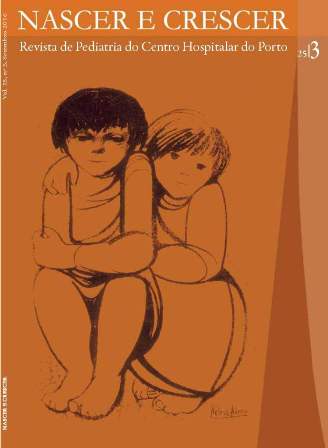SCREENING FOR NONVIRAL SEXUALLY TRANSMITTED INFECTIONS IN ADOLESCENTS: WHAT IS THE STATE OF ART
DOI:
https://doi.org/10.25753/BirthGrowthMJ.v25.i3.10080Keywords:
Chlamydia Trachomatis, gonorrhea, pelvic inflammatory disease, sexually transmitted infections, syphilis, trichomoniasisAbstract
Sexually Transmitted Infections (STI) is a serious public health issue with highest rates among teenagers and young adults.
In developed countries, non-viral STI include Chlamydia trachomatis, Neisseria gonorrhoeae, Treponema pallidum and Trichomonas vaginalis. Early detection of non-viral STI have a positive impact not only on patients health but also on public health as it allows timely prescription of appropriate treatment, reduces transmission between partners and decreases long-term complications, including pelvic inflammatory disease, chronic pelvic pain, ectopic pregnancy and infertility. Several international medical societies published recommendations for screening of some non-viral STI in certain groups. In Portugal, the rule of mandatory reporting of communicable diseases was updated by the Direção Geral de Saúde (DGS) in 2014 and includes gonorrhea, syphilis and Chlamydia trachomatis infection. Nevertheless, there are few studies on the epidemiology of STI in Portugal and only just recently the opportunistic screening of genital Chlamydia trachomatis infection was introduced in the National Health Plan 2011-2016. General Practitioner through their holistic person-centered approach of the patients, their family and social context (focusing on personal background / risk behaviors) will necessarily have a decisive role in both the primary prevention and STI screening.
Downloads
References
Recommendations for the Laboratory-Based Detection of Chlamydia trachomatis and Neisseria gonorrhoeae. Recommendations and Reports. Morbidity and Mortality Weekly Report. March, 2014. 63: 2.
CDC Sexually Transmitted Diseases: Treatment Guidelines 2015. June, 2015. Recomendations and Reports Vol 64. Nº 3. Disponivel em URL: http://www.cdc.gov/std/tg2015/ default.htm.
Medscape Medical News: Screening for Nonviral STIs: AAP Policy Statement. June, 2014. Disponível em URL: http:// www.medscape.com/viewarticle/827551.
American Academy of Pediatrics: Screening for Nonviral Sexually Transmitted Infections in Adolescents and Young Adults. Pediatrics 2014; 134: 302-11.
United States Preventive Services Task Force Recommendations for STI Screening. February 2014. Disponível em: URL: http://www.
uspreventiveservicestaskforce.org/Page/Name/uspstf- recommendations-for-sti-screening.
WONCA Europe. European Academy of Teachers in General Practice. A Definição Europeia de Medicina Geral e Familiar. Versão Reduzida 2005. Acedido em: URL: http://www. apmgf.pt/ficheiros/Definicao_MGF-EURACT_2005.pdf.
Hespanhol A, Couto L, Martins C. A medicina preventiva. Rev Port Clín Geral 2008; 24: 49-64.
European Centre for Disease Prevention and Control. Surveillance Report: Sexually Transmitted Infections in Europe 2011. Stockholm, September 2013. Acedido em: URL: http://ecdc.europa.eu/en/publications/publications/ sexually-transmitted-infections-europe-2011.pdf.
Miguel L, Sá A. Contribuição para o Plano Nacional de Saúde 2011-2016. Ministério da Saúde. Lisboa. Novembro 2010.
Costa A, Nogueira P. Evolução da sífilis em Portugal 2001- 2012. Direção-Geral da Saúde. 2º Congresso Nacional de Medicina Tropical. Abril 2013.
Walker DG, Walker GJ. Forgotten but not gone: the continuing scourge of congenital syphilis. Lancet Infect Dis. 2002;2(7):432–6.
Direção-Geral da Saúde. Norma: Exames Laboratoriais na Gravidez de Baixo Risco. 37/2011.
Orientações para o Tratamento de Infeções Sexualmente Transmissíveis. Dados Internacionais de Catalogação na Publicação (CIP) - Biblioteca da OMS. Organização Mundial da Saúde 2005. ISBN 92 4 854626 9.
CDC Grand Rounds: Chlamydia Prevention: Challenges and Strategies for Reducing Disease Burden and Sequelae. Morbidity and Mortality Weekly Report. April, 2011/60(12); 370-3.
Downloads
Published
How to Cite
Issue
Section
License
Copyright and Authors' Rights
All articles published in Nascer e Crescer - Birth and Growth Medical Journal are Open Access and comply with the requirements of funding agencies or academic institutions. For use by third parties, Nascer e Crescer - Birth and Growth Medical Journal adheres to the terms of the Creative Commons License "Attribution - Non-Commercial Use (CC-BY-NC)".
It is the author's responsibility to obtain permission to reproduce figures, tables, etc. from other publications.
Authors must submit a Conflict of Interest statement and an Authorship Form with the submission of the article. An e-mail will be sent to the corresponding author confirming receipt of the manuscript.
Authors are permitted to make their articles available in repositories at their home institutions, provided that they always indicate where the articles were published and adhere to the terms of the Creative Commons license.


